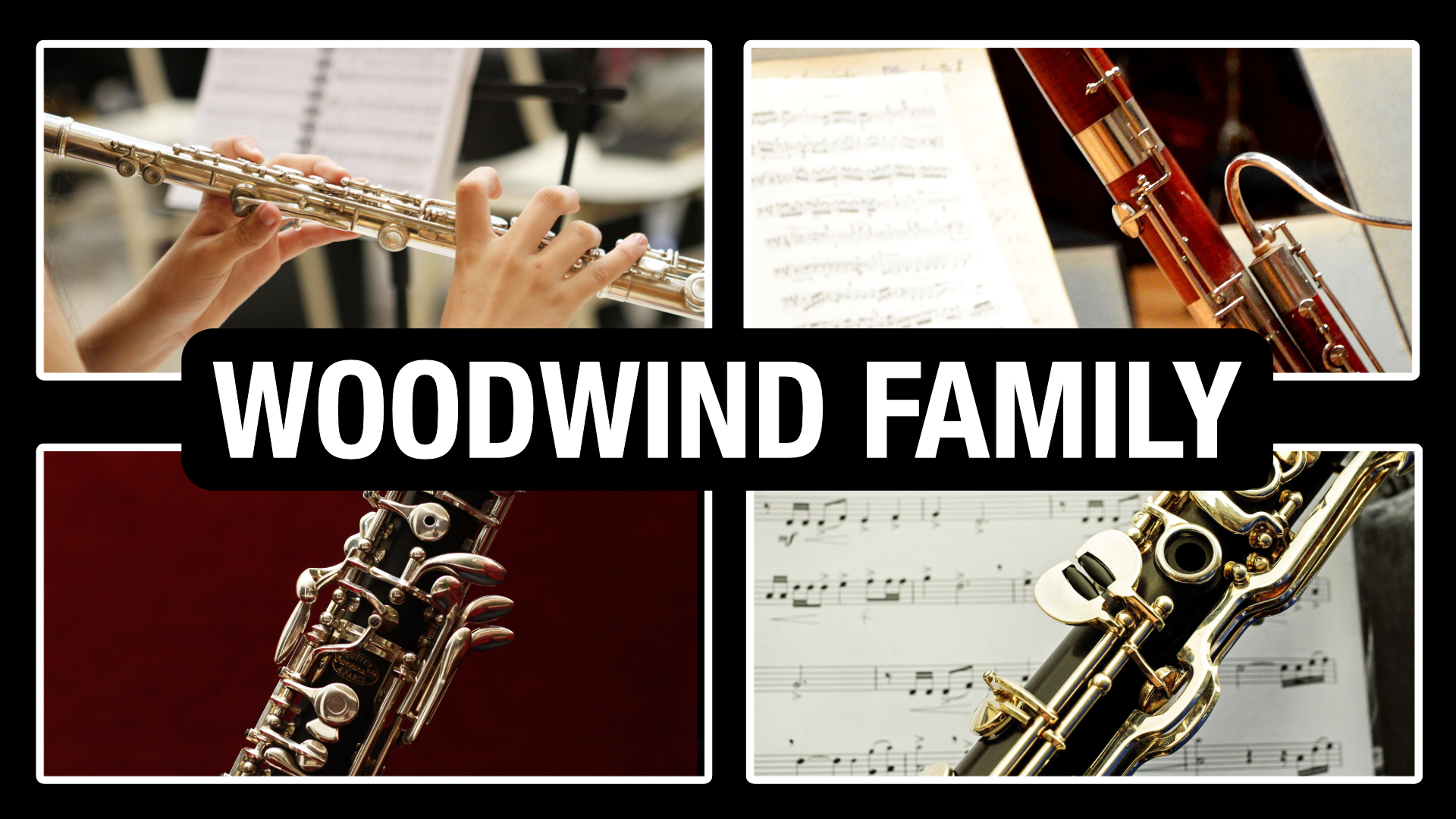 What instruments are in the woodwind section of the orchestra?
What instruments are in the woodwind section of the orchestra?
Well, there in fact 4 sub families of woodwind instruments, that together create the “Woodwinds Section” of a modern orchestra. Let’s explore each family in this article.
The Flute Family
This is the highest instrument family of the woodwind section, and are therefore most often used for leading melody lines, most often layered with other high range instruments of the orchestra.
They really shine with lyrical phrases and melodies due to excellent and distinct vibrato capabilities. The
The tone of the flute family is very pure, airy and delicate, which can add a sense of innocence to the music. Also since flutes are the oldest melodic instrument family of human history, they will always give a very familiar, down to earth and humble tonal texture to the listener.
Flutes are also extremely agile instruments, due to their keys, which makes them great for staccato parts, runs and fast rhythmic phrases as well.
They don’t have as much dynamic range as strings or brass, and they are very soft (low volume) instruments, so unless they are solo they tend to be more used for layering in orchestral arrangements.
As all woodwind instruments, there are a lot of types and variations of flutes. Here are the most common:
- C Flute (most common)
- Piccolo Flute
- Alto Flute
- Bass Flute
The Oboe Family
Just below the flutes in range, you will find the oboe family in the woodwind section of the orchestra. The oboe is what is called a “double reed instrument”, which has a very unique tone and character.
The sound is kind of “nasal”, but still dignified, and overall very classical in tone. The vibrato in particular is one of the most pronounced out of any instrument in the orchestra. And the dynamic range is incredible. Listen to Gabriel’s Oboe by Ennio Morricone to get a sense of the expressive beauty of this instrument.
It is however rarely used a solo leading instrument, but just like the flutes, most often layered with other instruments in the high range.
There are not a lot of variations of the oboe commonly used, but 2 types are very common:
- Oboe
- English Horn (Cor Anglais)
The Clarinet Family
Clarinets are single reed instruments, and in fact related to saxophones, even though the saxophone never truly found its place in the orchestra.
Clarinets have a rounder, warmer and more mellow sound than saxophones. They can not beat the saxophone in the loudest dynamics, but clarinets are amazing for playing in the low dynamic range.
In the lower range clarinets add a solemn, lonely vibe, with their round and soft sound. The layer very well with other instruments of the orchestra, but if you want to truly hear them in the mix you need a more minimal arrangement, or giving them a solo part in their range.
They come in a lot of variations, but here are the most common:
- Bb Clarinet (standard clarinet)
- Eb Clarinet
- A Clarinet
- Bass Clarinet
- Contrabass Clarinet
The Bassoon Family
The lowest member of the woodwind instrument family in the orchestra are the bassoons. They are, like oboes, double reed instruments. However, they are much lower in range than oboes.
The bassoons rarely get lead lines and shine in the spotlight, but they do layer well with for example the cellos or lower brass instruments.
The contrabassoon can also give some of that deep “airy” power to fill out the bass line of the composition.
The instrument has, like the oboe, a very unique tone due to being a double-reed design. Being in the lower range it does not have a “nasal” quality, but more a hollow, resonant, focused and airy sound.
The bassoon family comes in 2 main types in the orchestra:
- Bassoon (standard)
- Contrabassoon (double bassoon)

